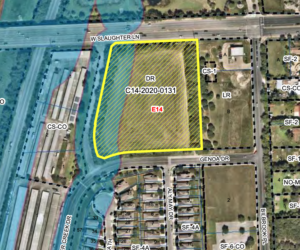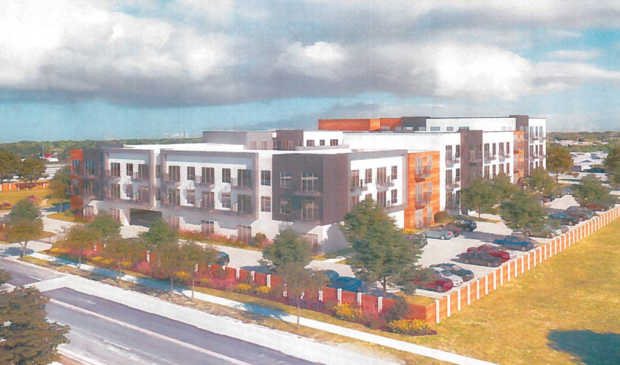Hindered by traffic concerns, ZAP punts on rezoning case
Tuesday, March 23, 2021 by
Jonathan Lee Members of the Zoning and Platting Commission disagreed Tuesday on the proper zoning for an apartment project at 1434 Genoa Drive in South Austin, letting the zoning case move to City Council without their input.
The commission’s main sticking point proved to be the right number of new homes – or rather, cars – the area could handle.
“What is that (traffic) impact we’re willing to accept to have more housing?” Commissioner David King asked.
The apartment project would add more cars to Bilbrook Place, the only outlet to Slaughter Lane for a 623-acre swath of land burgeoning with new residential development. The Bilbrook-Slaughter intersection, like many others in the city, sees more traffic than it was designed to handle.

The developer originally requested Multifamily-High Density (MF-5) zoning for the 5.2-acre agricultural property, which is currently Development Reserve (DR), a temporary designation for unused land that requires rezoning upon development. City staffers recommended Multifamily-Moderate Density (MF-3) zoning.
After talking to neighbors, the developer agreed to seek Multifamily-Moderate Density (MF-4) zoning, which would allow up to 240 apartments. But for some neighbors and commissioners, 240 was still too many.
“We appreciate the need for additional housing and we are not opposed to development,” said neighbor Ashley Kelm. “We are simply opposed to a high-density option on this very small parcel.”
Several neighbors who spoke at the meeting worried about the day-to-day delays they would experience from more cars using the Bilbrook-Slaughter intersection. They pushed for lower-density apartments or single-family homes to lessen the traffic impact.
“I do think there is some legitimacy in the arguments that neighbors are making about ‘one access in, one access out,’” Commissioner Ann Denkler said.
Commissioner Roy Woody, the new District 2 appointee, said, “Higher-capacity housing is good for some cases, but I’m not sure it is good for this specific case.”
Other commissioners minimized the traffic concerns. “I feel like ATD had already taken a good look and is providing the best they can,” Commissioner Nadia Barrera-Ramirez said, adding that a developer of a nearby subdivision is already paying for improvements to the intersection.
Commissioner Ellen Ray argued that concerns about traffic shouldn’t prohibit dense development. “If we’re going to wait to improve an intersection, we’re never going to build anything at a higher density. And if we continue to build single-family homes, our affordability crisis is only going to worsen.”
“We do have the ability to encourage supply and the production of market-rate housing, which is what a higher intensity would do here,” Ray said. King argued that even though the city has a housing supply shortage, allowing as many homes as possible isn’t always the right solution.
Commissioners voted 5-3-1 to recommend MF-3 zoning, but without a sixth vote, the motion failed.
The Austin Monitor’s work is made possible by donations from the community. Though our reporting covers donors from time to time, we are careful to keep business and editorial efforts separate while maintaining transparency. A complete list of donors is available here, and our code of ethics is explained here.
You're a community leader
And we’re honored you look to us for serious, in-depth news. You know a strong community needs local and dedicated watchdog reporting. We’re here for you and that won’t change. Now will you take the powerful next step and support our nonprofit news organization?




